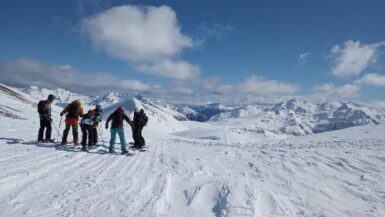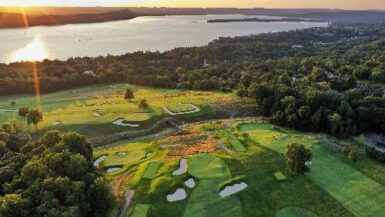Cybergolf is running my interview with Bill Love, the architect doing all the renovation work at Olympic Club for this year’s U.S. Open. The link is here.
From the article:
JF: Who are you older favorite designers?
BL: I’m pretty partial to Mackenzie – I like his philosophy on working with terrain. Plus he got great sites and made the most of them. His greens and his bunkering were something else – not only to look at but to play!
Isn’t it fascinating to look back on these architects and the sites they got, and you see how the mark of the great architects is in how they could make the most out of the land they got and make a truly great course out of it. I’m envious when I see how they could discover such interesting features in each course, bring it to fruition and make it seem unique and special. They’d walk the landscape endlessly and connect with the property to understand the spirit of the place and the inherent nature and character of the land. Every property is unique and you have to bring out the best character of every site and enhance it through the design of the golf course. That’s the greatest thing about golf – you can go all around the world and play the greatest courses in the world and they all have that “statement of place.”
“I also like Tillinghast, Seth Raynor and Donald Ross for the same reason. Take Bellport Country Club in the village of Bellport, Long Island, for example. It’s an old Seth Raynor course on the south shore. The club dates from 1899 and I think the course was built maybe around 1921. It runs right out to the water, but they had to redo three holes to bring them up out of a marsh and do some shoreline stabilization. So Trent Jones, Sr. built three holes right on the ocean, but they weren’t in the flavor of Raynor, they were in Jones’s style and they were good holes but they didn’t fit with the rest of the course and everyone knew it. So when I did a master plan in 2002 and suggested they redo those holes in the flavor of Raynor so they match the rest of the course, they agreed.
The Jones greens were fine, but we wanted to add Raynor features and strategies, so we redid all the bunkering, not the greens. We loved trying to emulate the bunkering work of Raynor and blending everything the best we could. We added long narrow bunkers with berming on one side, and some geometric bunkers and some rectilinear tees too. The tee boxes needed enlarging.
I remember one great hole, 17, where I’m going around with the super and we get to that green and it’s a bowl with a berm in front had chocolate drop mounds in front hiding it, making it blind.
JF: So it’s an Alps Hole?
BL: Yeah! So we were duplicating really interesting and bold things like that, or square bunkers, or anything Raynor would have done. We even did some chocolate drops.
But my favorite memory was turning to the super and telling him, “If I ever built this on an original design or suggested it to the membership of some private club that knew nothing about Raynor, they’d fire me!”
Bob Furchert was his name, and he laughed so hard after I said it, because he knew it was true. But it wasn’t unusual to him, he’s been there a long time. We are so pre-conditioned about maintenance – for the most part, not always, but often – I marvel at and admire his ability to have the members so in tune to what he was doing.
When you get the opportunity to build over the work of a great Golden Age architect: that’s one of the most gratifying moments of an architect’s life. So you take care to really be true to that architect and make your work look like it’s been there since the beginning of the golf course.
I got a wonderful compliment that really made me grateful and happy recently. We added a fairway bunker on 17th hole, where there had never been a bunker there before. Someone that played it said it looked like it had been there for the roughly 100 years of the golf course. Simulating Sam Whiting – that’s exactly what I was trying to do, and it sure was fun.”




